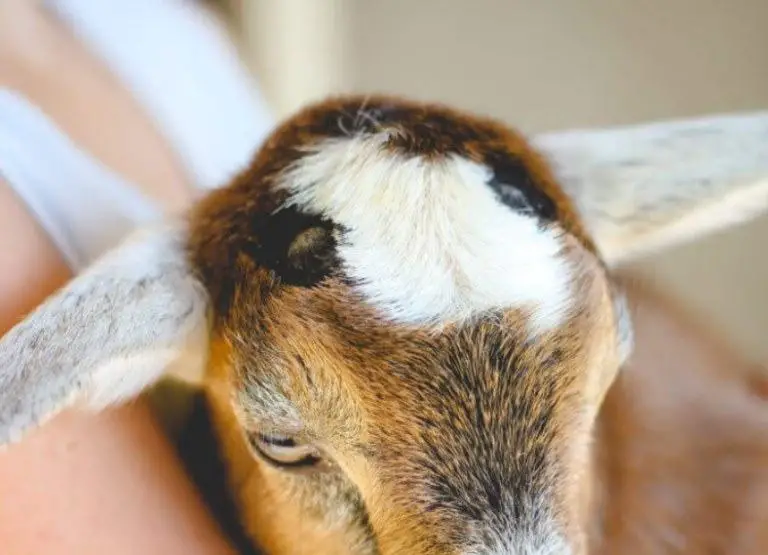No products in the cart.
Goat
Dehorning Goats: All You Need To Know!
The questions of dehorning goats or not and how to successfully dehorn goats are of great concern for farmers. Horns used to be important for goats in the wild. However, it no longer holds true with their farm life.
In fact, dehorning can prevent goats from being injured or dead. Our article below will provide you detailed information about disbudding your goats.
*This post may have affiliate links, which means I may receive commissions if you choose to purchase through links I provide (at no extra cost to you). As an Amazon Associate I earn from qualifying purchases. Please read my disclaimer for additional details.
Why should you dehorn a goat?
Goats’ horns are used to help them defend against their predators. They are also utilized to fight for a social rank within their herd. However, when kept indoors, these uses are no longer necessary.
Horned goats fighting can lead to injuries, which results in the reduction of production and welfare. Moreover, their horns can get stuck in either gates or fences, which leads to injuries, fatality, and damage to housing.
Because of these reasons, a majority of dairy goat producers dehorn kids early.
Meat and fiber goat producers less commonly disbud their goats. But if you do, you should follow the same following guidelines.
When should you dehorn a goat?
Depending on your goat breed, the appropriate moment to disbud your goat varies between 4 days and 10 days old. Generally, male kids’ horns tend to grow faster, thus they should be dehorned sooner than their female counterparts.
Regardless of their sex, try to disbud them from 4 to 10 days old, so you can avoid removing the buds when they are too old.
Learn more about Weird Goat Eyes
7 Methods of dehorning goats
There are several methods to dehorn goats. Below are some of our suggestions.
1. Caustic paste
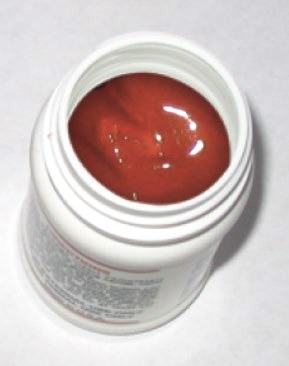
Dehorning paste contains a mixture of caustic substances that cauterize tissue & prevent horns from growing. This paste is applied to the goats’ buds.
- Advantages: This method is bloodless, isn’t invasive, and less painful to the kids.
- Disadvantages: The dehorned kids should avoid rain exposure and other animals for 6 hours.
2. Hot-Iron
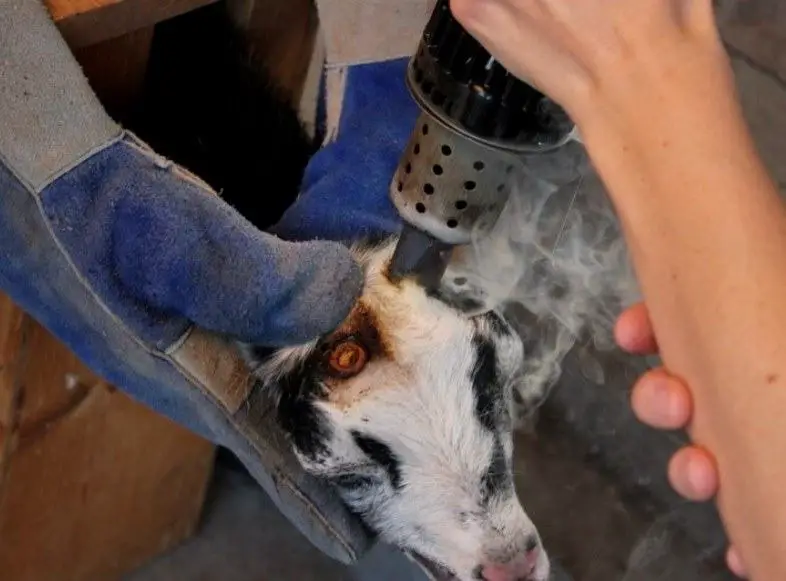
After you heat an iron to red-hot, press it firmly against the horn buds for around 20 seconds to destroy the horn-producing cells & prevent further development.
- Advantages: It’s non-bloody.
- Disadvantages: The method is more painful than the caustic paste.
3. Tube, cup, or spoon
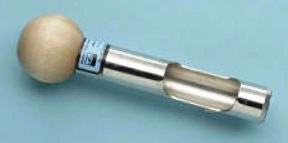
To take out the horns, you press a circular blade into the skin surrounding the buds, then rotate and tilt it.
- Advantages: This method works on even tiny horns.
- Disadvantages: It’s bloody and painful. Additionally, this method contains a chance of injury to both the animal and its handler.
4. Hand saw

You use a hand saw to cut the horn as well as a 0.5-inch ring of skin surrounding the horn base.
- Advantages: This dehorning method can be used for dehorning older goats.
- Disadvantages: It’s somewhat barbaric because of bloodiness. There is also a risk of infection or even death due to blood loss. Another possible consequence is a decline in the animal’s general health and performance such as weight loss.
5. Knife
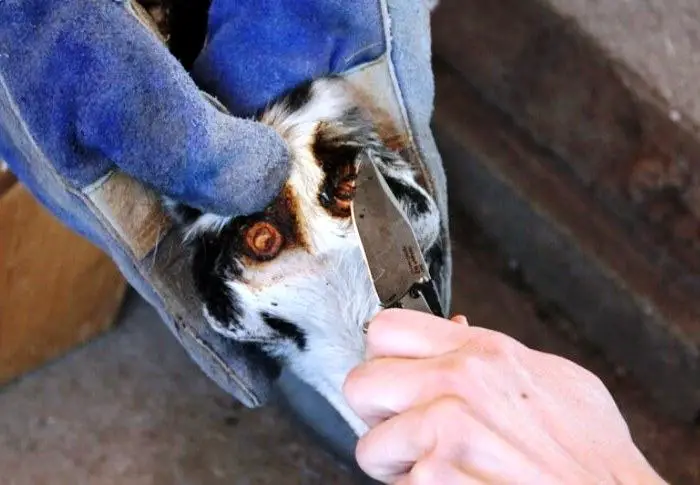
By using a knife to cut the skin both around and under the horn buds, you surgically remove the horns from their base tissue.
- Advantages: Disbudding goats in this way has high effectiveness on tiny horns.
- Disadvantages: Similar to the handsaw method, it’s bloody and painful. Additionally, it has a risk of injuries to both the kids/goats and their handlers.
6. Barnes or “Gouger”
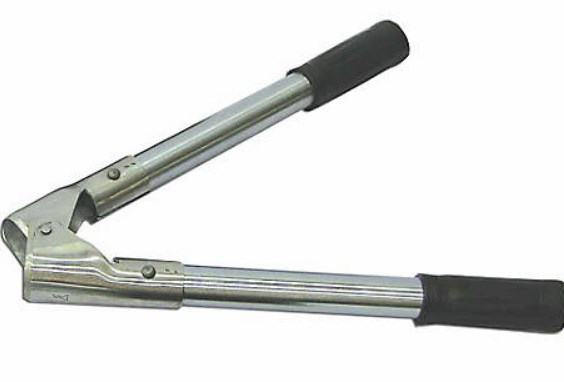
A Barnes dehorning refers to a series of sharp scoops that are hinged and closed. You place this tool against the horn base as well as the surrounding skin.
- Advantages: A variety of instrument sizes are available.
- Disadvantages: It’s bloody and painful for the goats. Moreover, there is a chance of injuries to both the animals and the handler.
7. Keystone or “Guillotine”
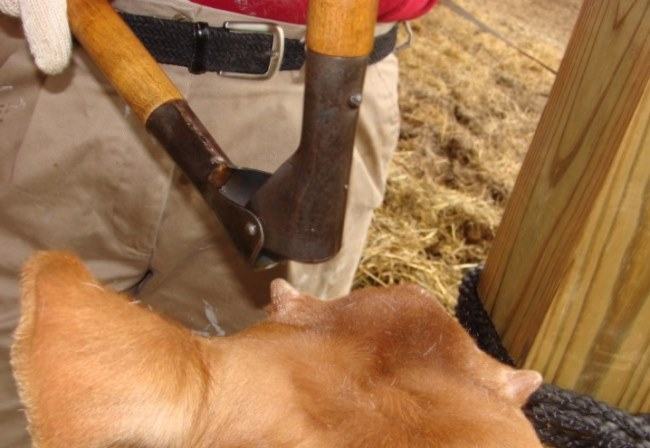
There are two handles in a keystone dehorning. They move a blade down to a plate/another blade, which slices through the horn base and its surrounding skin.
- Advantages: You can use this tool for older goats with big horns.
- Disadvantages: It’s bloody and painful for the goats. Moreover, there is an increased risk of infection and exposed sinus. This method can cause a decline in the goats’ overall health and performance.
Did you know: Can Pigs and Goats live together?
How to dehorn goats with a hot iron?
Dehorning with a hot iron is a preferred method by farmers with 95% of them disbudding their goats this way. Below is the step-by-step instruction on how to dehorn goats with a hot iron.
Step 1: Trim the goat hair around its small buds with hair clippers. At the same time, preheat a dehorning iron for around 10 minutes.
Step 2: Put the kid (small goat) in a holding box, which is an important tool in dehorning baby goats due to their strength.
Step 3: Check whether the helper is keeping the kid in the correct place. Its head should be placed in the U-shaped slot. Before dehorning, you should test the iron. It’s ready to be used if it creates a nice ring in less than 2 seconds on the piece of wood.
Step 4: Press the ready iron around the baby goat’s small bud. This open circle encircles the bud’s tip. Allow the iron’s weight to act as your pressure. Slowly clockwise rotate this pressure for about 3-4 seconds.
You would want a good copper ring surrounding the bud base. It’s possible that you won’t get it the first time. If so, allow it to cool before repeating the process on the other side.
Step 5: After achieving the copper ring, utilize a knife to cut off the baby goat’s bud. Make sure you get all the way down to the bud’s base.
The base may bleed or not. If it does bleed, the next step will help you take care of the issue.
Step 6: Burn the bud’s base with the horn side to cauterize and create a nice top seal on the baby goat’s bud.
Step 7: Repeat the process on the other bud.
Step 8: Before you finish, place the iron on each ring for 3 more seconds. Then inspecting the burnt buds to ensure you haven’t missed any spots.
If everything seems to be in order, place the baby goat back to its mother or give it a milk bottle to soothe it right away.
Step 9: Allow the burned buds to rest for a day before applying something to them. You might find some oozing and a little blood, but don’t be concerned.
You can cauterize the wound again if it bleeds profusely, but you probably won’t need to. The hair around the buds will regrow in around 2 weeks, and you won’t see any horns.
More Facts about Dehorning Goats
1. Can you dehorn older goats?
Yes, you can. However, when their buds are not small enough to fit the hot iron’s ring, they’re too old for this method.
To disbud older goats, you can try banding goat horns, which is a process that involves tying wire as well as a band around the goat horns before these horns fall off.
For this method, where you place the bands is important. After shaving the horn base, you need to put the right band as low as you can around the goat’s horn base. In case the band is not low enough, it will roll off or the horns can redevelop.
Banding horn is painful for the goats and takes a maximum of 8 weeks to heal. Painful goats are not productive ones. Therefore, you should dehorn them when they are young.
2. Does disbudding hurt goats?
It depends. If you dehorn them when they are young (before reaching the age of 2 – 3 weeks old), they are unlikely to feel the pain.
The reason is that 3 weeks of age is the milestone when horn tissues start to develop and attach to the kids’ skull.
By then, you can feel small nubs of horn on top of their head, and dehorning at that point will be more painful for them and the technique required is more complex to guarantee success.
Don’t disbud your goats too late!
If you have the intention of dehorning goats, you should do it early, ideally between 4 and 10 days old.
Otherwise, the process will be more painful for the goats, the technique required will be more complicated while the rate of success will decrease when the goats get older.
